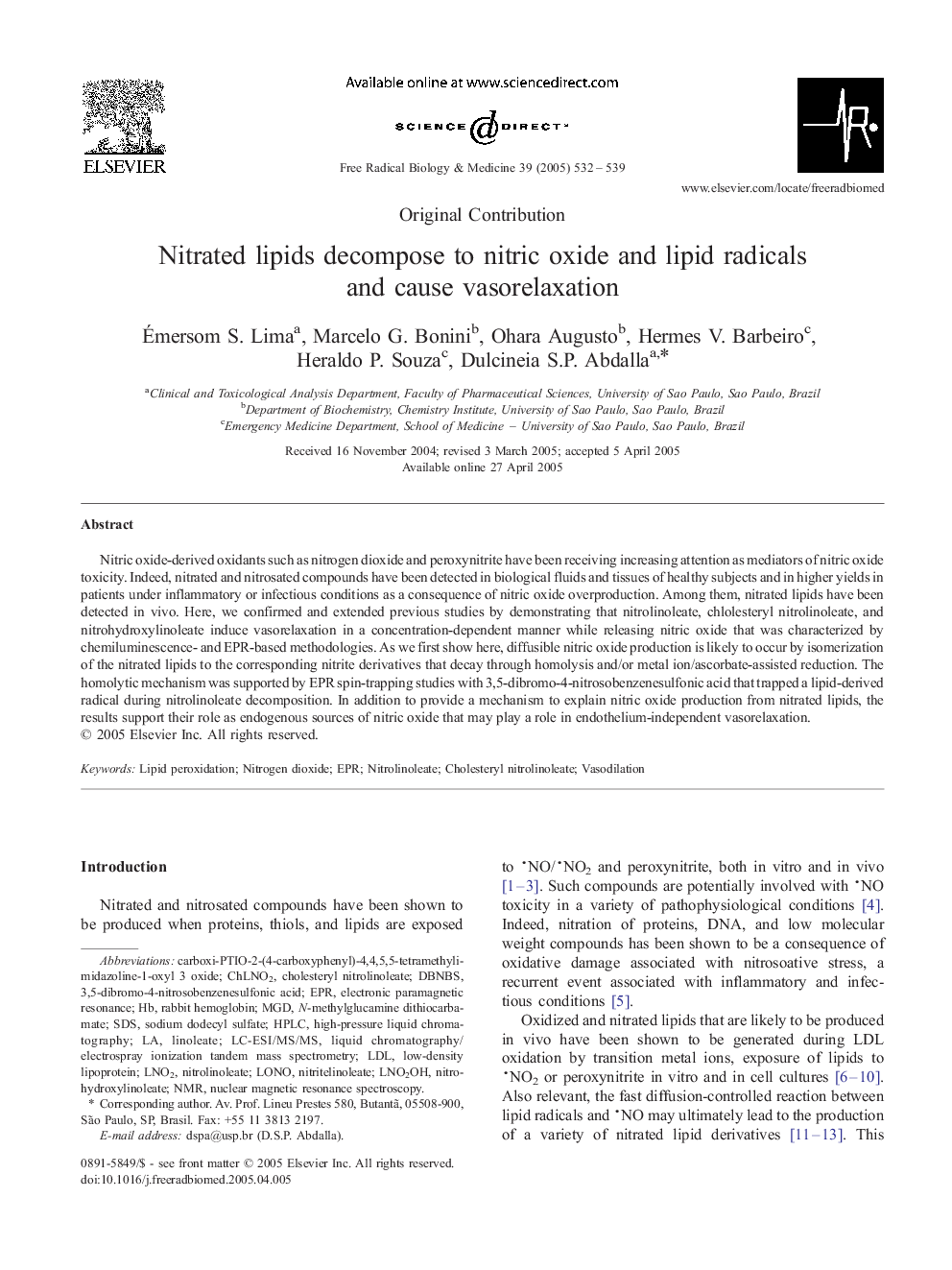| Article ID | Journal | Published Year | Pages | File Type |
|---|---|---|---|---|
| 10739123 | Free Radical Biology and Medicine | 2005 | 8 Pages |
Abstract
Nitric oxide-derived oxidants such as nitrogen dioxide and peroxynitrite have been receiving increasing attention as mediators of nitric oxide toxicity. Indeed, nitrated and nitrosated compounds have been detected in biological fluids and tissues of healthy subjects and in higher yields in patients under inflammatory or infectious conditions as a consequence of nitric oxide overproduction. Among them, nitrated lipids have been detected in vivo. Here, we confirmed and extended previous studies by demonstrating that nitrolinoleate, chlolesteryl nitrolinoleate, and nitrohydroxylinoleate induce vasorelaxation in a concentration-dependent manner while releasing nitric oxide that was characterized by chemiluminescence-and EPR-based methodologies. As we first show here, diffusible nitric oxide production is likely to occur by isomerization of the nitrated lipids to the corresponding nitrite derivatives that decay through homolysis and/or metal ion/ascorbate-assisted reduction. The homolytic mechanism was supported by EPR spin-trapping studies with 3,5-dibromo-4-nitrosobenzenesulfonic acid that trapped a lipid-derived radical during nitrolinoleate decomposition. In addition to provide a mechanism to explain nitric oxide production from nitrated lipids, the results support their role as endogenous sources of nitric oxide that may play a role in endothelium-independent vasorelaxation.
Keywords
3,5-dibromo-4-nitrosobenzenesulfonic acidLNO2DBNBSLC-ESI/MS/MSMGDSDSvasodilationNMREPRElectronic paramagnetic resonancesodium dodecyl sulfateNuclear magnetic resonance spectroscopyLinoleateLow-density lipoproteinLDLNitrogen dioxideLipid peroxidationLiquid chromatography/electrospray ionization tandem mass spectrometryhigh-pressure liquid chromatographyHPLC
Related Topics
Life Sciences
Biochemistry, Genetics and Molecular Biology
Ageing
Authors
Ãmersom S. Lima, Marcelo G. Bonini, Ohara Augusto, Hermes V. Barbeiro, Heraldo P. Souza, Dulcineia S.P. Abdalla,
